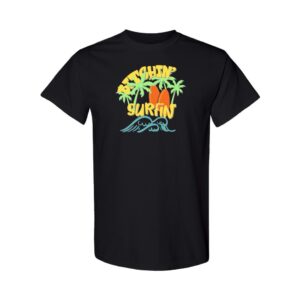No products in the cart.
‘Bitterbrush’ Director Discusses Why the Observational Documentary Required “A Leap of Faith”
Though director Emelie Mahdavian planned some of the story structure for her latest film, Bitterbrush, well in advance, there was only so much she could anticipate when it came to making a documentary about two young female range riders responsible for hundreds of cattle over the course of one summer. Chasing the women with a camera as they rode on horseback around mountainous terrain in Idaho, filming them in a harsh snowstorm and encountering one character’s unexpected pregnancy ensued.
“There’s a certain leap of faith that you have to take whenever you’re making a film that is basically observational,” Mahdavian says. “You make a decision that the people are interesting and then you decide that if you stick around and listen to them, something will come about that’s interesting.”
Bitterbrush, which ended up as a feature-length film that premiered at the Telluride Film Festival and is releasing in theaters this Friday, follows Hollyn Patterson and Colie Moline over the course of one seasonal ranch job as they live, work and reflect on what’s next in their lives. In between attempting to move and care for hundreds of cattle over the course of the summer and completing other work on the ranch (mending a fence, breaking in a horse), the women discuss the nature of their gig work and how long they think it can last. “I love this work, I love this lifestyle… but the thing is, I don’t want to be working for just a house my whole life and just making the bills,” Moline says early in the film.
Mahdavian tells The Hollywood Reporter in an interview that she hopes the film prompts audiences to accept the women’s viewpoints and perhaps think about “how we balance family and work and gender norms, or how we think about the economics of the agricultural industry and small family operations.” Mahdavian also talks about how she built trust with Patterson and Moline, how she and her team shot the film’s many sequences depicting the women’s work on horseback and her subjects’ reaction to the film.
Where did the idea for Bitterbrush initially come from?
It came from dinner at my neighbor’s house, where these two incredible range-riding women showed up and I was sort of surprised and intrigued by them. I was living in Idaho and they were working for some association of ranches who had the land not too far from where I was living.
How did the film start to come together from there? After you met these women, how did you decide that you wanted to do a film with them?
It’s a good question. There’s a certain leap of faith that you have to take whenever you’re making a film that is basically observational. You make a decision that the people are interesting and then you decide that if you stick around and listen to them, something will come about that’s interesting. At the same time, I went into it with some very clear formal constraints and I really tried to plan in advance to make sure I would get the structural elements I would need to frame the story. I understood from the beginning that the relationship that they had to the land was something that interested me, the relationship that they had to their futures, to the potential of starting families versus their work life, all of those things were themes that we had talked about, so I knew that they were things on their minds. And so I wanted to basically structure my time to make sure I made space for those things to emerge over the course of the summer. And then I didn’t really worry about whether it was a feature or short, I just started filming.
How did you find the process of financing this film as compared to previous films?
This film had the support of Catapult Film Fund in the very beginning, so that is a fund that supports you to make a fundraising sample, so that money basically paid for the initial shoot. And then the editing of a fundraising sample. After that, there wasn’t a lot of money that came in until really late in the process. And I think that that’s sort of a reflection of the fact that an observational film is inherently risky. I’m willing to make that leap of faith, but it’s a lot to ask of somebody who’s thinking about it in terms of financial recoup. It was a very tightly constrained concept from the beginning and I was able to get it quite far without support coming in. And then in the end, when we had the edit, it was in the can, then the rest came in because I think it was clear that there was something very special that Hollyn and Colie’s story was bringing out.
Did it take some time for Hollyn and Colie to get them comfortable with the filmmaking team and the camera?
Yeah, it did. I spent time with them outside of the filmmaking, because we were neighbors, so it was possible for us to just have beers or have dinner. So they knew me and my husband and we had mutual friends and we would see each other. The actual film was made, I think, in 15 shoot days in total, so it was quite efficient in terms of the number of shoot days, and I think of those six or seven were only me. So part of what we were doing was trying to make sure that these richly cinematic things, where I wanted the DP and the fancy lenses and all the rest, happened on days when I had them. But for the things that were really intimate, some of that came from days when it was just me and Derek [Howard, the film’s cinematographer] and nobody else, and some of it came from days when it was just me. I think that that intimacy is something that you get when you’re comfortable with the person you’re around — when you trust them. There’s a certain feeling that they know that if I’m rolling, that I’m capturing it on the camera, but they also know who it is that is behind that camera and what their intention is. So they’re just more open and more comfortable. And I think ultimately that’s something you can’t always get around, so that’s why that was my approach.
What was your approach to filming Hollyn and Colie in sequences when they are riding over mountains and rounding up cattle? How did you manage to follow them?
That is like the central question of the film, is this apparently logistical question, because this piece of logistics is what facilitates the whole aesthetics of the film. So there’s a few different things going on: There are some time where what you see is wide shots where we have gotten somewhere adjacent to where they are, and sometimes that was by ATV, sometimes that was by ATV plus some hiking. In the first portion of summer, I wasn’t willing to get on a horse because I was eight months pregnant and I didn’t want to fall off and lose my baby, so I was avoiding doing that, but I did try putting that camera team on horses. And what we discovered was that it’s incredibly difficult to follow them all over the place because they’re really skilled horsewomen, they’re very fast, the terrain is rugged and they don’t know what they’re doing next. Because if they see something over there that’s gone wrong, they’re just off, and you have to like repack your camera gear and try to get it back into saddlebags on horses, and you’re so far behind, it doesn’t work.
So then when you see the material that we shot that’s at horse level, that was shot from horseback. And so that was really a matter of building a rig that could be held in one hand, and then what Derek was doing was basically whenever he had the focus pull, he had to set down the reins. So, for instance, in the snowstorm scene, there are these kind of long takes that are all from horseback — because there are no drones, everything is from horseback if it’s moving with them. And so Colie brought one of her horses that was a really a well-trained, good horse and that’s what Derek was on. That horse knew to follow, and so he was able to set down the reins when he needed to. He had this monitor strapped to his chest and the snow was blowing into it, and he was looking in his monitor and would pull focus, and then he would reach back out, and be like [to his horse], “No, left, stay closer to the other horse,” and then he would pull focus again. So it was this kind of insane feat. It’s my favorite scene, of course, because of that and also just because it’s so visually beautiful.
How much of the story of this film did you find during production, and how much did you find in the editing room?
I found all the details in production because it’s observational but I set out with all of the thematic ideas in mind already about women’s relationship to work and family, about human relationships to land and to meaning and to purpose. So there were many shot-listed elements that were present in pre-production that you see in the edit, having to do with things like showing up to see the cabin at night and the stars and the changing of days. So you can see that the film has these kind of formal structural elements, and all of those were very clearly shot-listed. As well as indications about their hands and the horses. But then how they spoke to each other, what transpired over the summer, Hollyn getting pregnant, no, I didn’t have any control over any of that. And that’s the beauty of it, you’re improvising and you’re giving them a lot of power to decide what they give you for the film.
Have Hollyn and Colie seen this film yet, and if so, what were their reactions?
They’ve both seen it and they’re going to see it together in L.A. at the Autry [Museum of the American West], so that will be the first time that they get to see it in the same venue, with me, all of us together. Colie and I were at Telluride, and she saw it there and I think for Colie, it was really moving for her, coming from a very, very small town with very little ability to access how other people might relate to her story. It was very moving for her to then see people responding to her story about her mother, to her concerns about the economics of family farms, and people were just coming up to her after the screenings and talking to her. I saw how present she was and how moved she was by that, and it was wonderful. And of course she was crying during the film. And Hollyn similarly was. I haven’t gotten to watch it with her, so I’ve shared it with her, and she expressed to me that she was really happy with it. But I’m going to get to see it with her for the first time on Wednesday.
Now that the film is coming out in theaters, what are you hoping to impart to audiences?
I mean, I’m hoping first of all that people just go with the two women for the film, that they accept their world for the length of the film. This is part of why I framed it like I did: They accept their point of view and their concerns and then maybe when we arrive at the very end of the film, depending on where our lives our and what our concerns are, maybe we’re thinking about how we balance family and work and gender norms or how we think about the economics of the agricultural industry and small family operations. I think there’s a few things that are really central for them that I hope people notice. I also think a lot of people coming out of the pandemic are also just appreciating what they appreciate in their work, which is that opportunity to pause and see the big view, see the quiet grandeur of the landscape, and feel for a moment that sense of peace and belonging. Because for a lot of us, the last few years have been a time of so much upheaval where we’re kind of figuring out how to reconnect and where we fit in the world. I think in some ways that thing that causes them to continue to show up with a real sense of purpose for a job that’s underpaid and insecure is also a thing that many of us long for as humans.
This interview has been edited for length and clarity.











